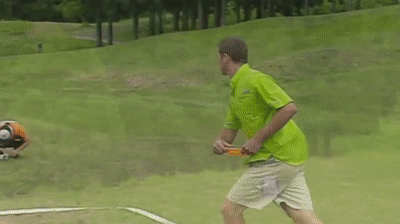Brychanus
* Ace Member *
You may be, more generally, i couldn't say.But it's a safe bet that you're right on this one. There's no way that wobble, with additional drag, can add distance potential, unless perhaps the lift associated with wobble-drag was somehow way stronger than ordinary smooth-flight lift. Which seems highly unlikely, to say the least.
Yes, but where is the perceived distance increase conversation coming from, (Tech Disc or science)? Real world examples of more turn caused by wobble are nearly imperceptible because BH wobble is typically dampened before you can see any effect on turn and significant FH wobble seems to quickly increase fade.
I guess I'm imagining two players and both are in real-world situations:
1. A new player with low armspeed who is putting a lot of OAT/wobble on the disc at release. It turns the "overstable" disc into a turning disc early in flight. The player concludes that some discs are "too understable" for them. If instead they had low-wobble throws they would potentially learn different habits and make different conclusions.
2. @CoachChris may have something specific to say there in this case. A very advanced player like Wiggins who at some (and of course it appears to vary) had high-wobble throws on things like a Boss, which should initially somewhat slow the disc with drag but also send it into more turn initially. With a 85mph release once the wobble dampens, the disc is still moving so fast that great distance is achieved. I suppose what Chris is suggesting is that whatever bit of turn is happening early on due specifically to wobble may end up being negligible in a real-world context, but I'm raising it because I am curious, as usual.

Then for the sake of contrast, you have someone like GG where there are now actual data that he achieves low wobble, high spin rate throws such that even though he throws "only" in the mid-70s mph, he is not suffering the early drag from the wobble (@CoachChris) while throwing relatively understable discs that naturally have a pronounced gyroscopically stable turn phase when thrown well.
Last edited:
